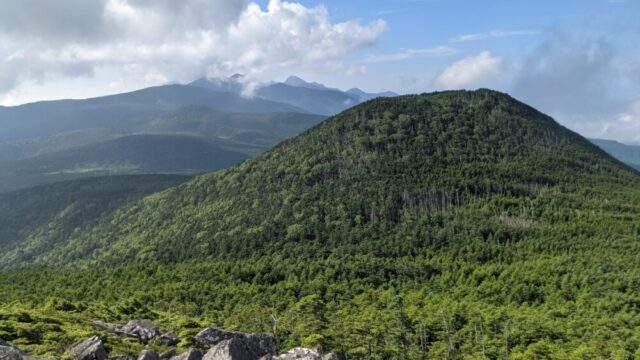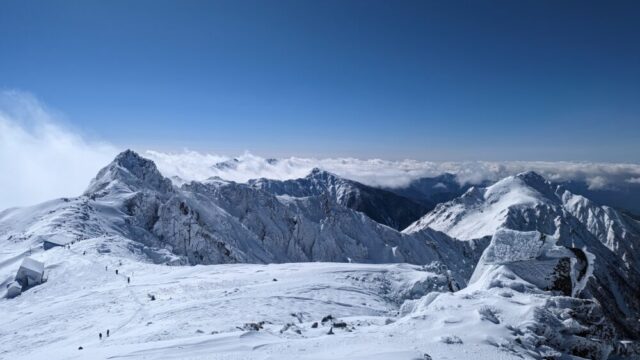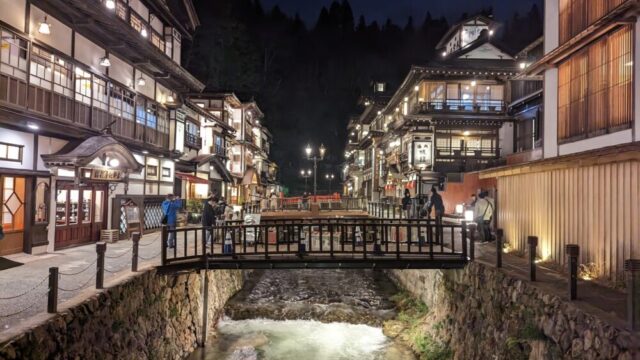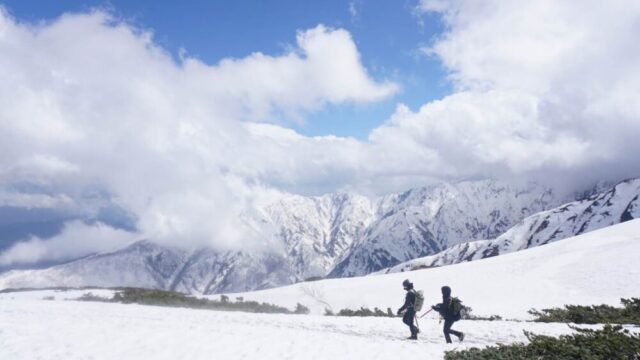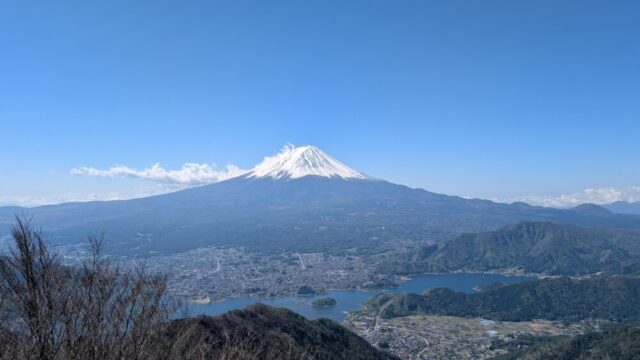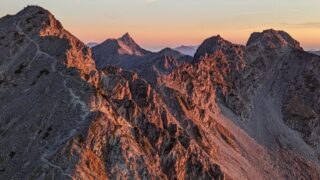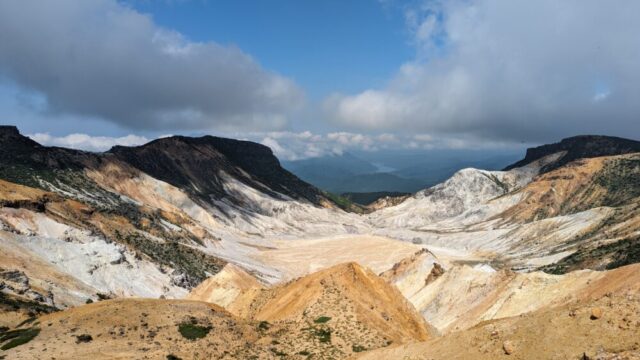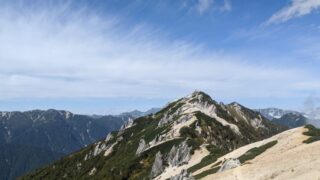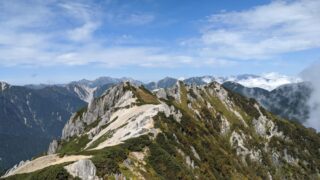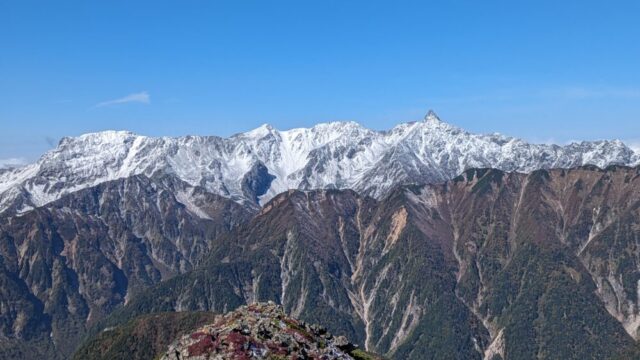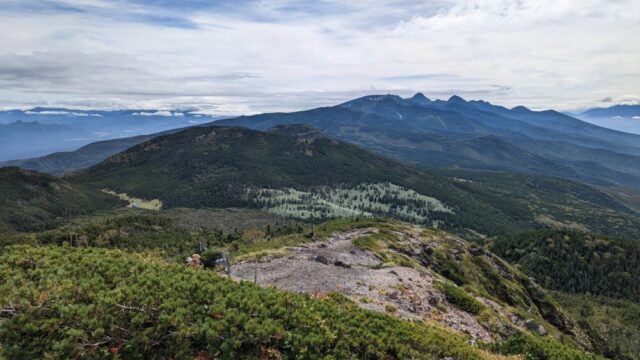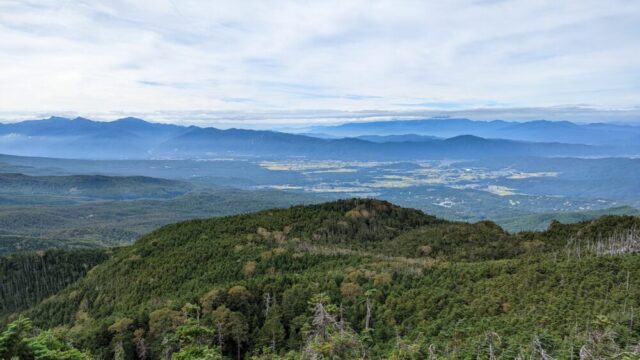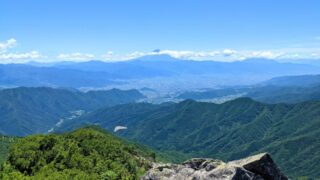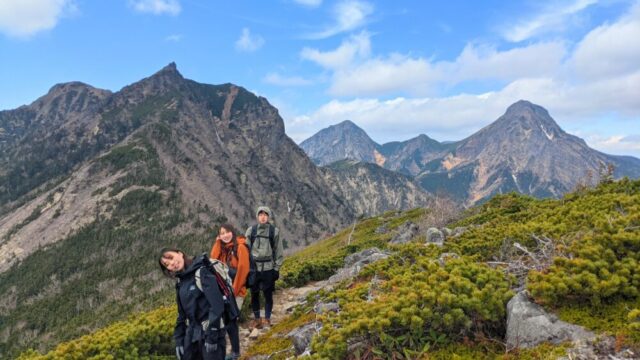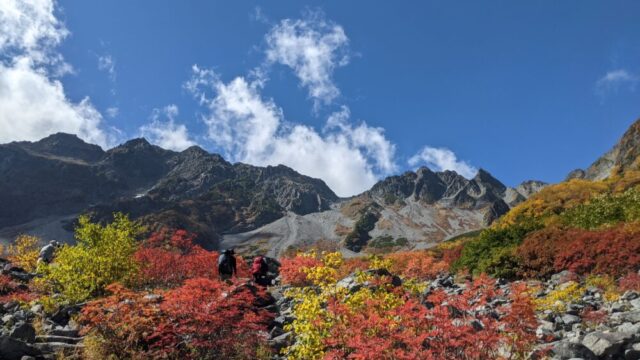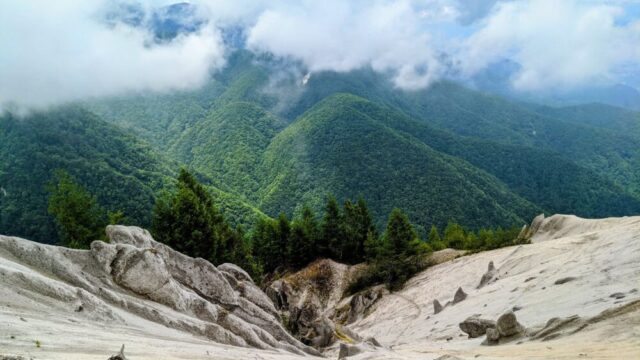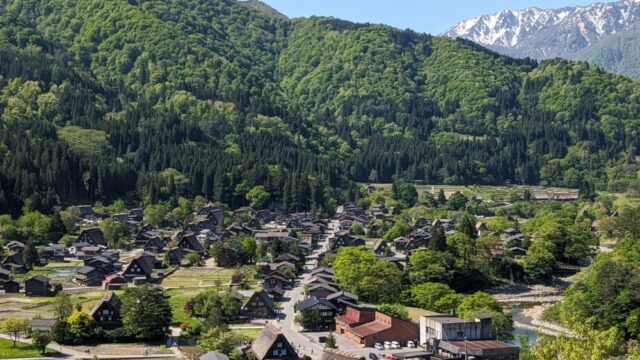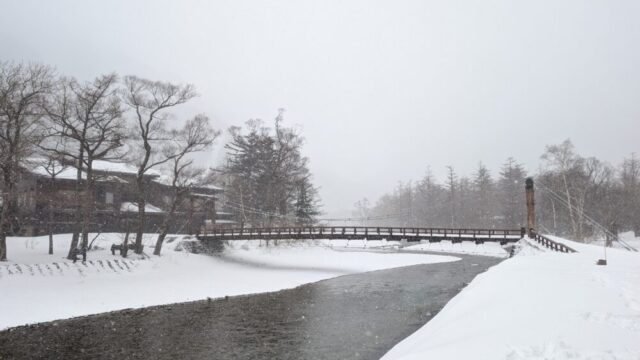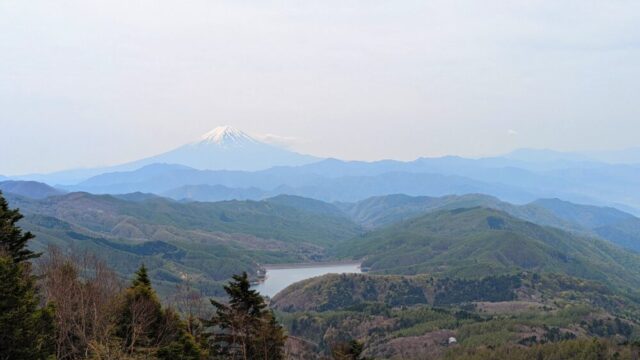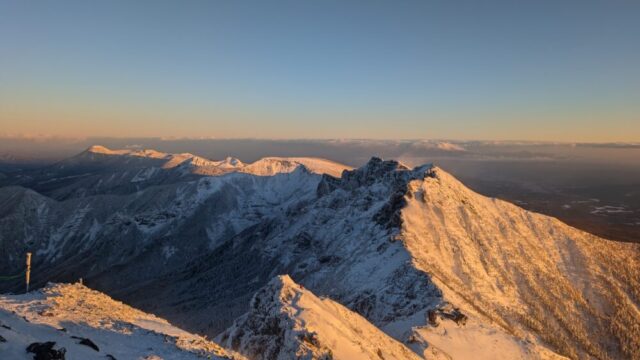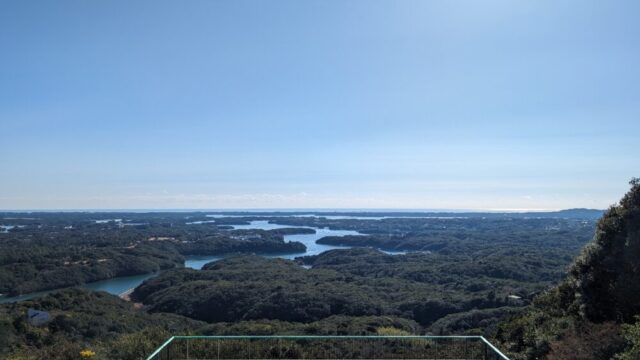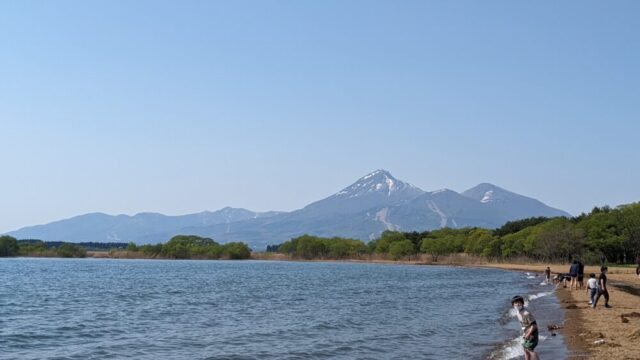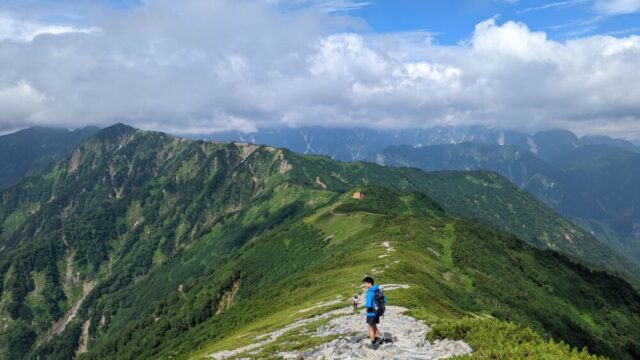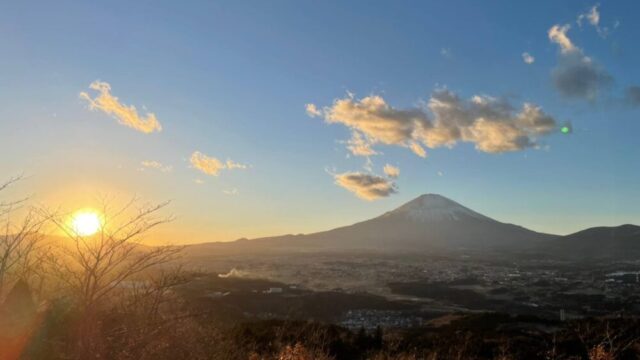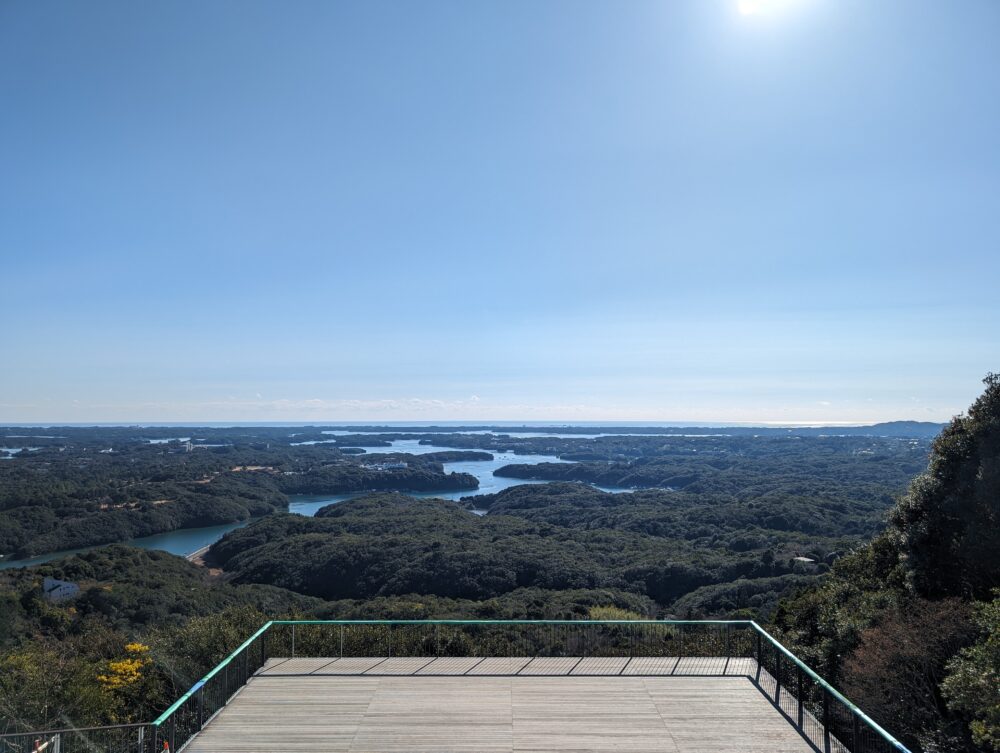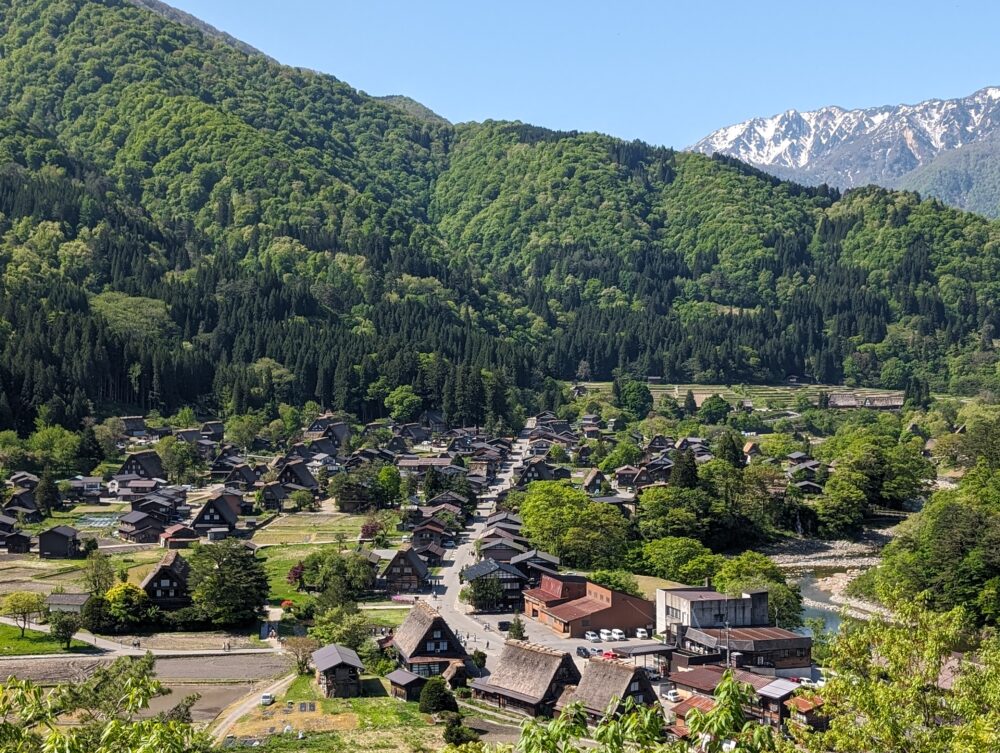Fukushima Prefecture is full of spots that will excite your mind! First, experience the wonders of the sea at Aquamarine Fukushima, where you can meet marine friends. Afterwards, enjoy a trip back in time at Ouchi-juku and relax by the tranquil shores of Lake Inawashiro. If you like driving, drive along the Bandai-Azuma Skyline and be impressed by the spectacular views of Azuma-Kofuji and Mount Adatara. For film lovers, the Nasugawa Special Effects Archive Centre is an interesting spot. Now, why not enjoy a trip to Fukushima?
- Model route of the journey (time and distance required)
- Hiking Baer travel records
- Aquamarine Fukushima: an aquarium where you can enjoy the sea of Fukushima.
- Lake Inawashiro was created by the volcanic activity of Mount Bandai.
- It’s like a mini Mt Fuji! Enjoy a spectacular crater walk at Azuma Kofuji!
- An inn town where time stands still! Step back in time to the Edo period at the Ouchi Inn.
- Godzilla, Ultraman… The Nasugawa Special Effects Archive Centre, where the souls of special effects heroes dwell!
- A famous mountain with a spectacular moon-like view! Mount Adatara, a mountain in Fukushima recommended for beginners in mountaineering.
- summary
Model route of the journey (time and distance required)

Morning: Aquamarine Fukushima.
Start your active day by choosing Aquamarine Fukushima as your starting point.
Duration: approx. 2 hours stay.
Approx. 30 minutes by car from Iwaki Station.
Afternoon: Lake Inawashiro
▪ About 2 hours 30 minutes by car from Aquamarine Fukushima.
You may wish to take a break or enjoy a light lunch by the lakeside.
Afternoon: Bandai-Azuma Skyline
Approximately 1 hour 15 minutes by car from Lake Inawashiro.
You can enjoy beautiful mountain scenery while driving.
Afternoon: Azuma-Kofuji
Conveniently located within the Bandai-Azuma Skyline.
Short climb possible, stay for approx. 1 hour.
Morning: Ouchi-juku
Approx. 1 hr 30 mins drive from accommodation.
Stroll through the thatched-roof streets.
Duration: approx. 2 hours
Afternoon: Nasukawa Special Effects Archive Centre
About 1 hour and 40 minutes by car from Ouchi-juku.
This is an interesting facility, especially recommended for special effects fans.
Hiking Baer travel records
Quite a few people think that there is nothing to do in Fukushima, but this is not true at all! There are many places to visit in Fukushima, from nature to historical spots and aquariums! Please take a look at the spots we’ve introduced.
Aquamarine Fukushima: an aquarium where you can enjoy the sea of Fukushima.
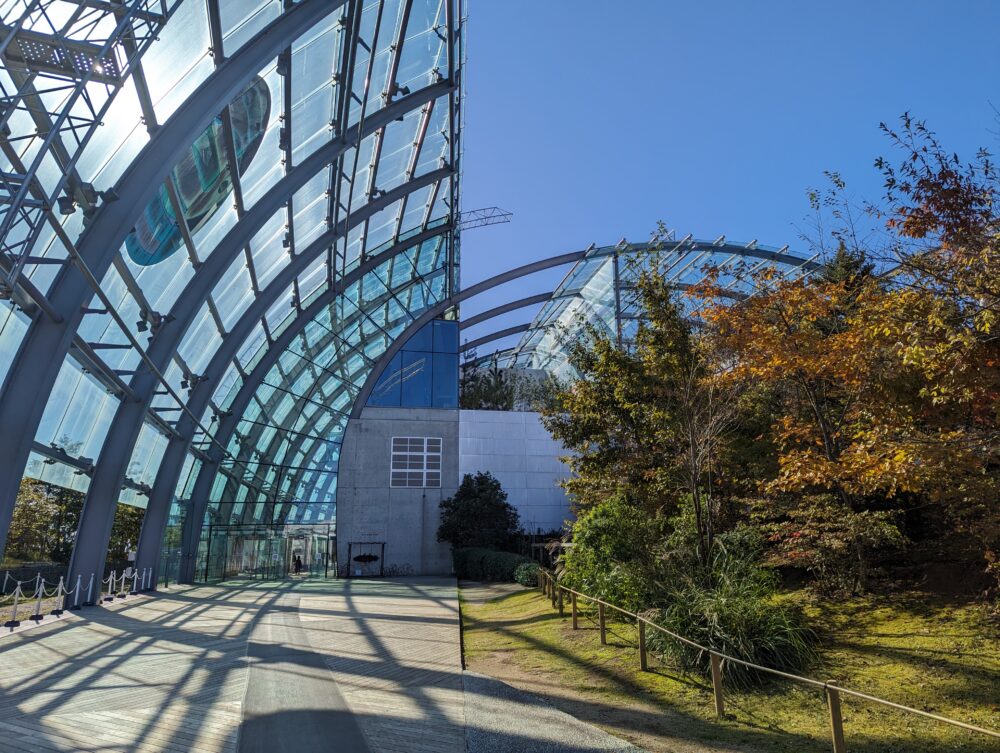
Aquamarine Fukushima is one of the largest aquariums in the Tohoku region, located in Iwaki City, Fukushima Prefecture. The theme of the aquarium is ‘Ocean and Human Interaction’, and the exhibits reproducing the diverse ecosystems of the Pacific Ocean are very appealing. The large aquarium tank, which recreates the ‘tidal zone’ where the Oyashio and Kuroshio currents meet, is a particularly impressive feature. The aquarium is designed for the enjoyment of adults and children alike, with a tunnel-shaped tank and a touch pool where children can touch the sea creatures. The aquarium also plays a role as an environmental aquarium and focuses on disseminating information on the conservation of the natural environment.
~ Features and attractions ~.
A must for lovers of sea creatures!
800 species are on display and you can meet some rare creatures.
Fun for the whole family!
There is a wide range of content for children and adults to enjoy, including dolphin performances and sea lion shows.
You can learn about the creatures of the seas around Fukushima!
There is a corner where creatures from the seas around Fukushima are displayed, so you can learn about the local sea.
A wide range of special exhibitions and hands-on programmes!
Various experience programmes are available, including limited-time-only exhibitions, fishing and feeding experiences.

History and background
Aquamarine Fukushima was opened on 15 July 2000. Aiming to be a ‘new aquarium for the 21st century’, the aquarium has adopted exhibition methods that reproduce entire ecosystems, rather than being bound by conventional exhibition methods. In particular, the aquarium’s large tank, which focuses on the natural phenomenon known as the ‘tidal zone’ where the Oyashio and Kuroshio currents meet and reproduces this rich ecosystem, was a big hit when it first opened. The aquarium was severely damaged in the Great East Japan Earthquake, but thanks to the support of many people, it was fully reopened in July 2011 and has become one of the symbols of recovery.
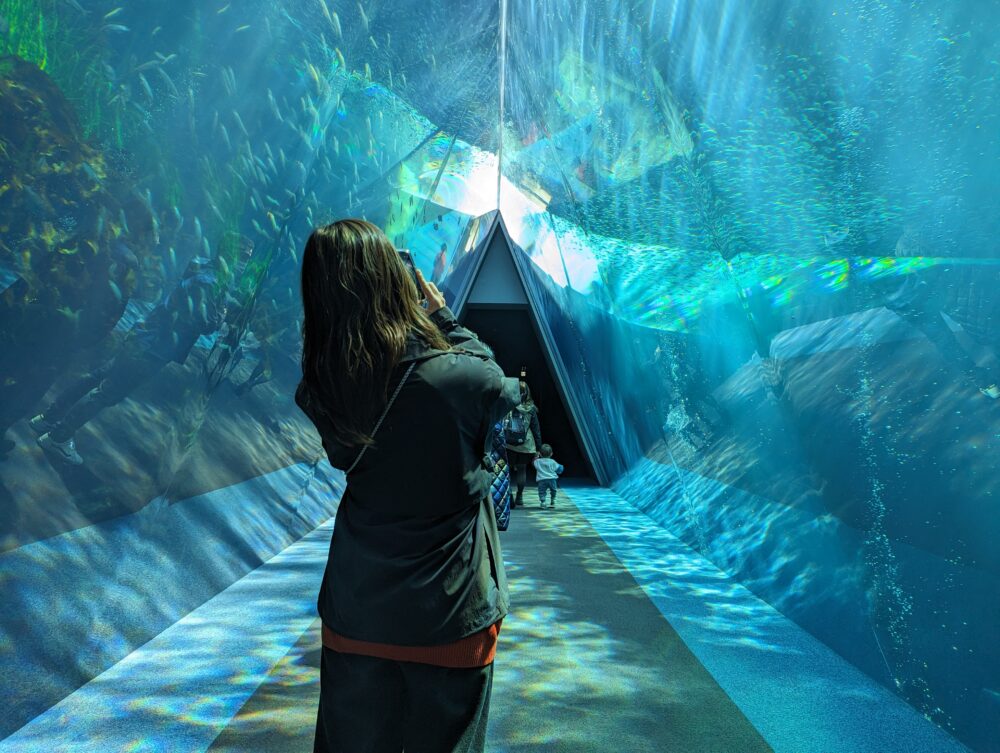
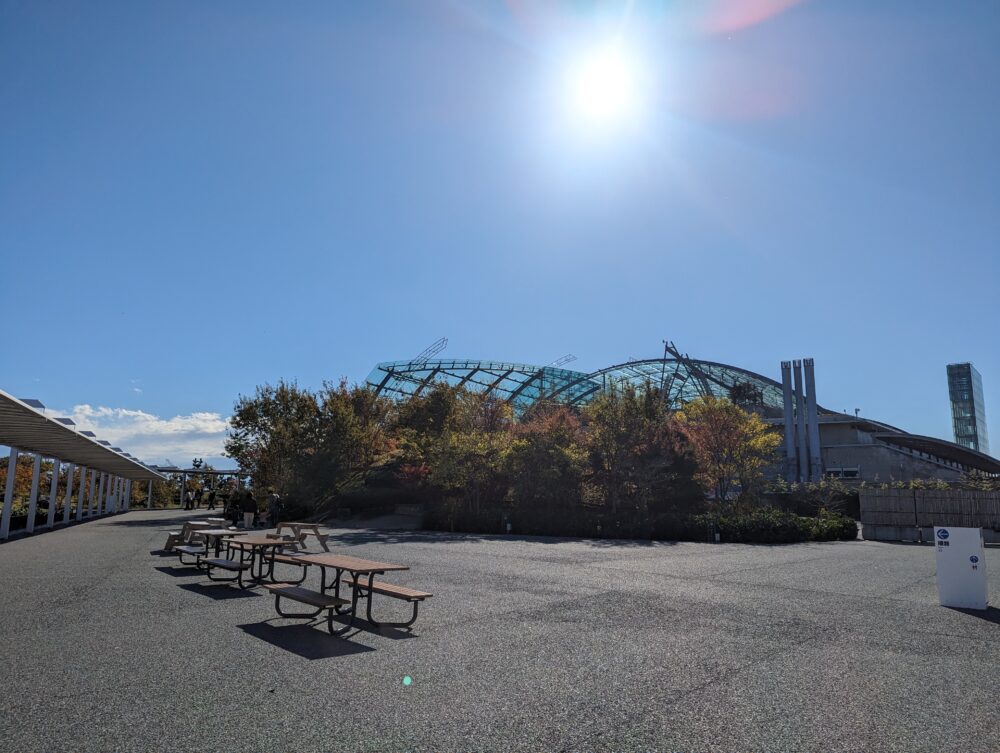
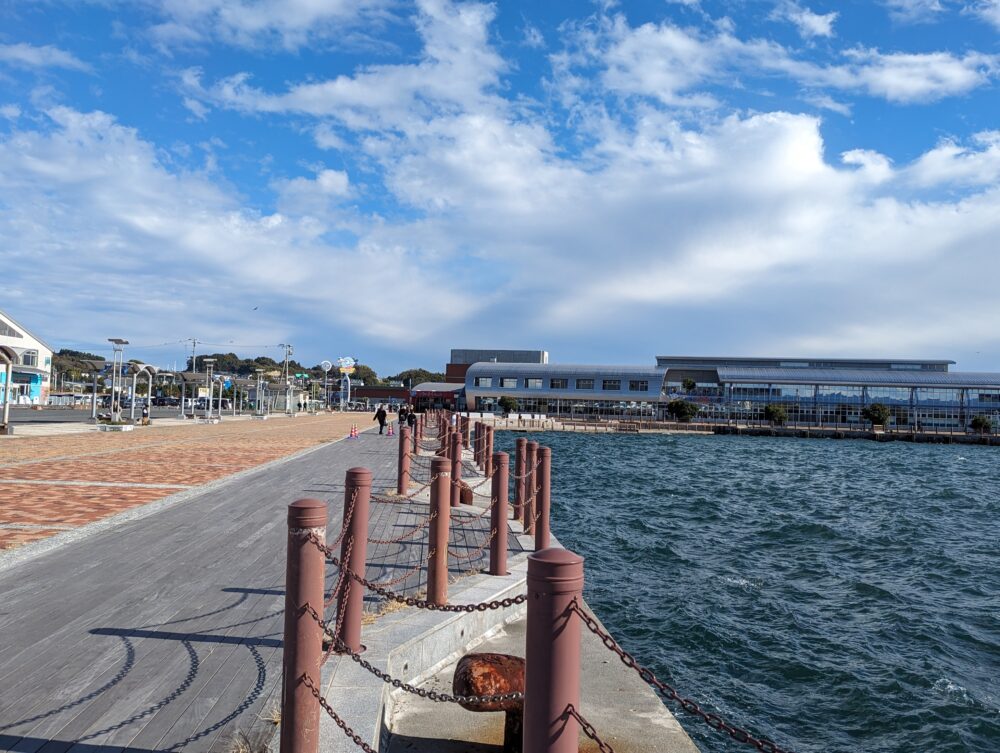
Reference information
Official website:https://www.aquamarine.or.jp/
Fees and opening hours:
Admission: ¥1,800 for adults, ¥900 for elementary and junior high school students.
Opening hours: 9:00-17:00.
Prices may vary depending on the season and events, so please check the official website in advance.
Sightseeing season:
Aquamarine Fukushima is open all year round, but is particularly crowded with tourists in summer and on holidays. Weekday mornings are relatively uncrowded, so you can relax and enjoy the aquarium.
~How to get there from Tokyo~
■How to get there by car
(1) From the Metropolitan Expressway, take the Joban Expressway towards Iwaki.
Exit the motorway at the Iwaki Nakoso IC or Iwaki Yumoto IC.
(2) From each IC, it takes about 20-30 minutes to get to Aquamarine Fukushima.
Journey time:.
Approximately 2 hours 30 minutes – 3 hours (excluding rest time).
Fare:.
Motorway toll: approx. 3,500 – 4,500 yen (varies with ETC discount, etc.)
■By train
Route: Tokyo Station or Ueno Station → (JR Joban Line Limited Express Hitachi-Tokiwa) → Izumi Station → (local bus) → Aquamarine Fukushima
Details: 1.
(1) From Tokyo or Ueno Station, take the JR Joban Line Limited Express ‘Hitachi’ or ‘Tokiwa’.
It takes about 2 to 2.5 hours to arrive at Izumi Station.
(2) From the East Exit of Izumi Station, take a local bus (platform 2) bound for Aquamarine Fukushima.
It takes about 15 minutes to arrive at Aquamarine Fukushima.
Journey time:.
Approx. 2hr 15 min – 2hr 45 min (including transfer time).
Fare:.
JR Joban Line limited express (Tokyo/Ueno → Izumi): Reserved seat approx. 5,500 – 6,500 yen (varies depending on season and train).
Local bus (Izumi Station → Aquamarine Fukushima): approx. 370 yen one way
Total: approx. 5,870 – 6,870 yen
Tip: Train express fares vary depending on the train you take and the time of year. It is recommended to check the latest information on the JR East website in advance. It is also helpful to check bus timetables in advance.
Lake Inawashiro was created by the volcanic activity of Mount Bandai.
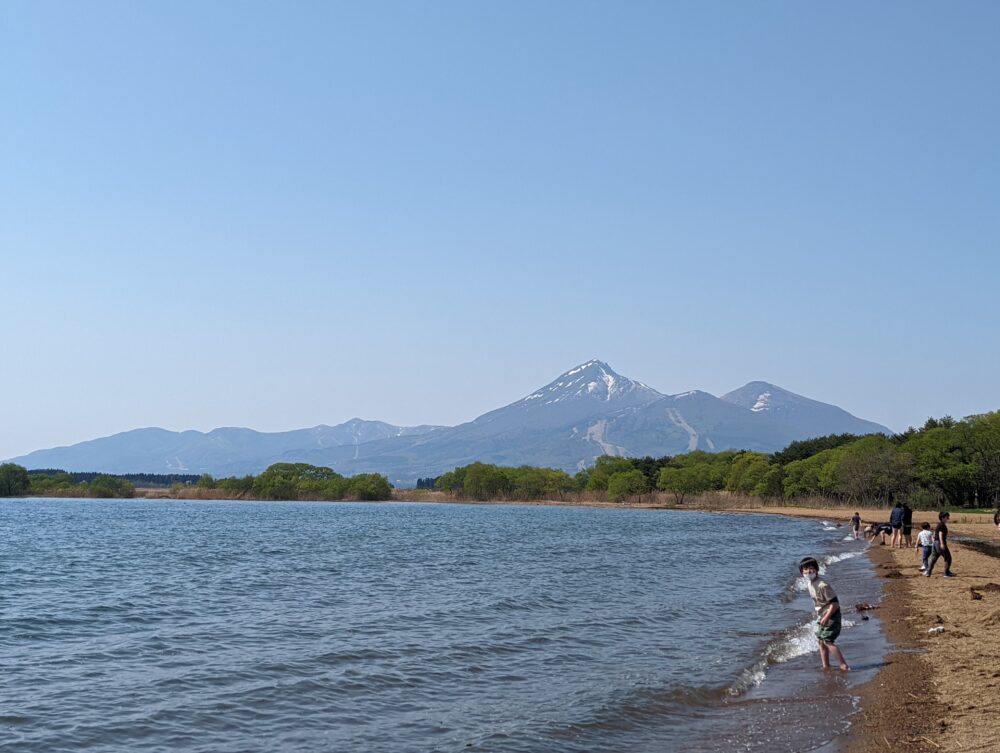
Lake Inawashiro is the fourth largest lake in Japan and is located in Fukushima Prefecture. The lake, which is said to have been created by the eruption of Mount Bandai, is also known as ‘Lake Tenkagamiko’ due to its high transparency, and its beautiful lake surface shows various expressions depending on the season and time of day. Visitors can enjoy lake bathing and marine sports in summer, skiing and wakasagi fishing in winter and other activities throughout the year. The lakeside area is also dotted with tourist attractions such as swan flying sites, hot springs by Lake Inawashiro and the Hideyo Noguchi Memorial Museum, making it an area where you can enjoy nature and culture to the full!
~ Features and attractions ~.
A must for lovers of spectacular scenery!
The lake’s surface, reflecting Mount Bandai, is breathtaking, changing its colour in different shades depending on the time of day and the weather. The scenery is particularly special in the early morning and at dusk.
Ideal for those who want to enjoy themselves actively!
In summer, as well as bathing in the lake, you can enjoy marine sports such as windsurfing, SUP and canoeing. In winter, you can enjoy winter sports at the nearby ski slopes or try your hand at wakasagi fishing on the frozen lake.
Those who want to experience history and culture will also be satisfied!
The birthplace and memorial museum of Hideyo Noguchi, the world-renowned medical scientist, are located by the lake, where visitors can learn about his achievements and life. There are also historic hot springs dotted around the area, where you can enjoy a hot-spring cure.
For families who want to make memories together!
There are plenty of activities for children and adults alike, such as playing in the water on the spacious sandy beach or taking a walk on the lake on a sightseeing boat. There is also a campsite by the lake, where you can enjoy the outdoors to the full.

History and background
Lake Inawashiro is thought to have been created by the volcanic activity of Mount Bandai some 40,000 years ago. The eruption caused the river to be blocked and the water pooled there, creating Lake Inawashiro. Due to its high transparency, the lake has long been known as ‘Lake Tenkagamiko’ (mirror lake), reflecting the view of the sky. During the Edo period, the lake was also used as an important source of water for the Aizu clan, supporting people’s daily lives. In the Meiji era (1868-1912), Hideyo Noguchi, who was born here, became a world-renowned medical scientist, and a memorial museum was built by the lake in honour of his achievements. In this way, Lake Inawashiro is not only a beautiful natural environment, but also a lake deeply connected to people’s lives, history and culture.
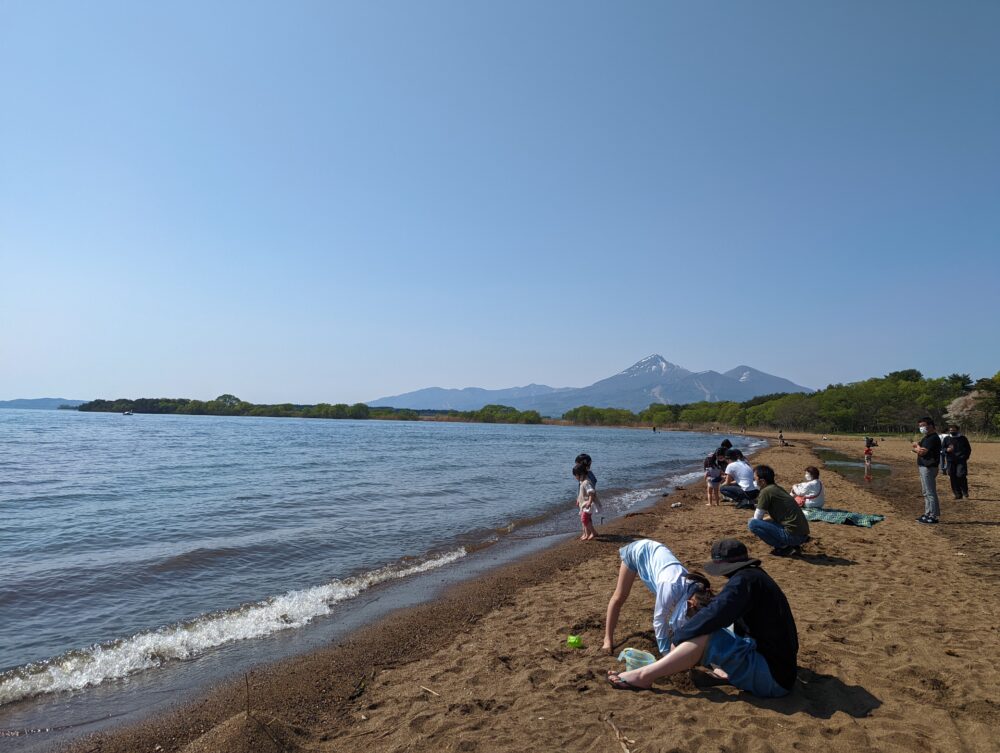
Reference information
Official website: https://www.bandaisan.or.jp/
Tourist season:
Open all year round, but particularly crowded with tourists in summer and on holidays. Weekday mornings are relatively uncrowded and can be enjoyed at a leisurely pace.
~How to get there from Tokyo~
■How to get there by car
From the Metropolitan Expressway, take the Tohoku Expressway and transfer to the Ban-Etsu Expressway at Koriyama JCT.
Exit the motorway at the Inawashiro Bandai Kogen IC or Bandai Atami IC.
Journey time:.
Approx. 3 h 30 min – 4 h (excluding rest time).
Fees.
Motorway tolls: approx. 4,000 – 5,000 yen (varies according to ETC discounts, etc.)
■Train Directions
Route: Tokyo Station → (Tohoku Shinkansen Yamabiko) → Koriyama Station → (JR Ban-Etsu-Nishi Line) → Inawashiro Station
Details:
(1) Take the Tohoku Shinkansen ‘Yamabiko’ from Tokyo Station.
It takes approximately 1 hour 20 minutes to 1 hour 40 minutes to arrive at Koriyama Station.
(2) At Koriyama Station, change to the JR Ban-Etsu-Nishi Line and head towards Aizu-Wakamatsu.
Arrive at Inawashiro Station in approximately 40-50 minutes.
Journey time: approx.
Approx. 2 – 2.5 hours (including transfer time).
Fares:.
Tohoku Shinkansen (Tokyo → Koriyama): Non-reserved seat approx. 6,000 yen, reserved seat approx. 6,500-7,000 yen.
JR Ban-Etsu-Nishi Line (Koriyama → Inawashiro): approx. 760 yen
Total: approx. 6,760 – 7,760 yen
■Access from Inawashiro Station to the lakeside:.
From Inawashiro Station, buses run to the Inawashiro lakeside.
The journey takes approximately 5-20 minutes. Taxis are also available.
Tip: Train transfers and fares may vary depending on the train used and the time of year. It is recommended to check the latest information in advance.
It’s like a mini Mt Fuji! Enjoy a spectacular crater walk at Azuma Kofuji!
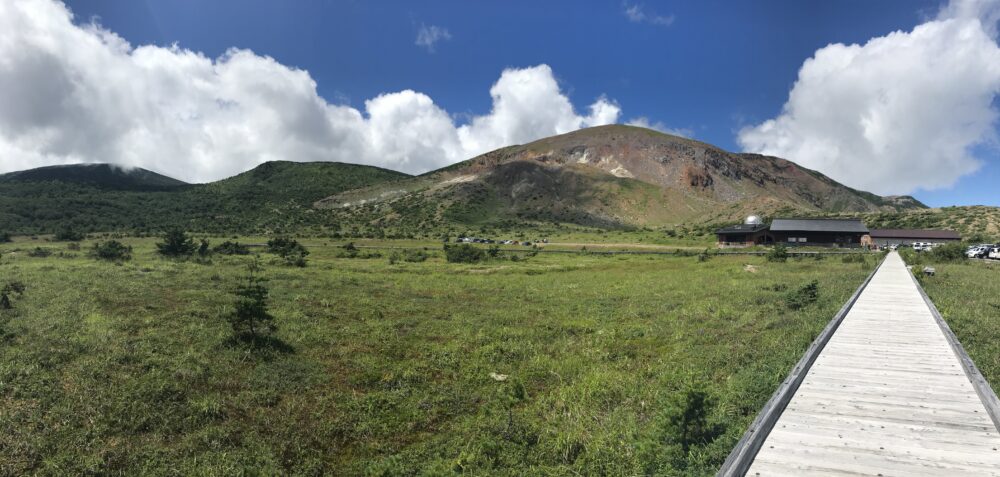
Azuma Kofuji is a crater on Mount Azuma, an active volcano located in Fukushima Prefecture at an altitude of approximately 1,707 metres. As the name suggests, it was named after its beautiful conical shape, which closely resembles Mt Fuji. Located along the Bandai-Azuma Skyline, the crater wall is easily accessible within a few minutes’ walk from the car park. From the boardwalk that circles the crater wall, visitors can enjoy a 360° panoramic view of the powerful crater, the surrounding mountains and even Lake Inawashiro in the distance. It is a popular spot for many tourists and hikers from spring to autumn.
~ Features and attractions ~.
Easy access to spectacular views!
The crater wall at an altitude of 1,700 m is only a short distance from the car park and offers breathtaking views. The attraction is that you don’t need any serious mountaineering equipment to enjoy the view.
Fuji in miniature!
Its beautiful conical shape is just like a miniature Mt Fuji. The view from the summit is exceptional and the perfect spot for a commemorative photograph.
360° panorama!
From the promenade that circles the crater wall, you can enjoy a spectacular view of the rugged crater, the surrounding mountains and even Lake Inawashiro in the distance if the weather is fine.
Different faces for each season!
The beautiful nature can be enjoyed in each of the four seasons: fresh greenery in spring, alpine flora in summer and autumn leaves in autumn. The contrast between the red and yellow mountains and the crater is particularly spectacular during autumn leaf colour.
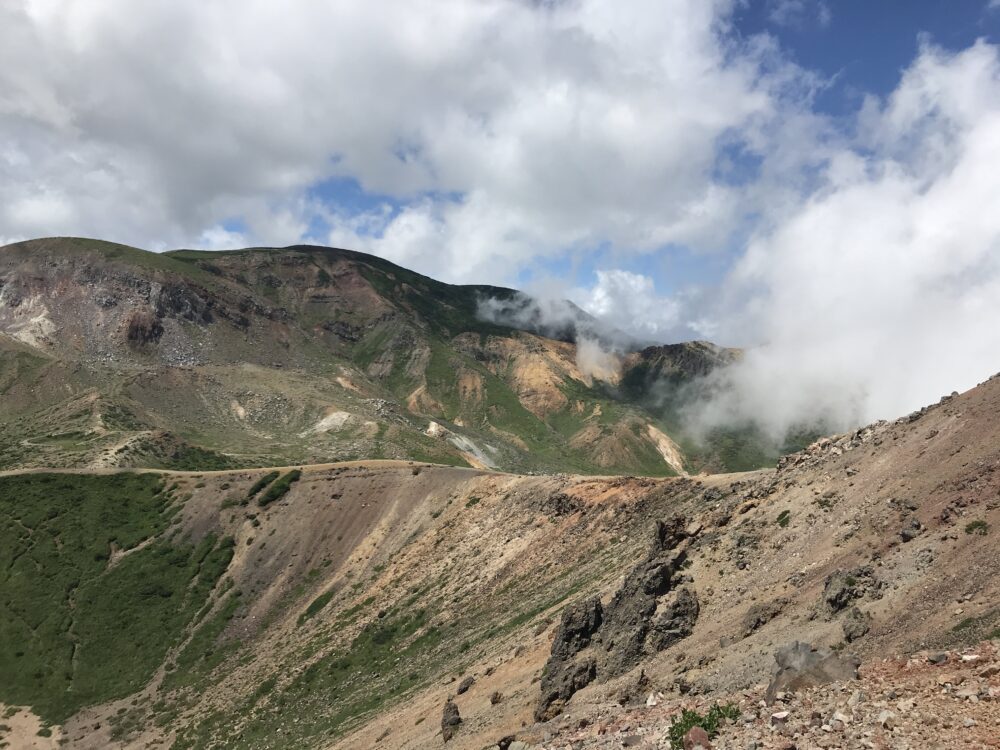

History and background
Agatsuma Kofuji is thought to have been formed by the eruptive activity of Mount Agatsuma, which occurred some 30 000 years ago. It is a relatively new crater and is still volcanically active today. A small shrine is enshrined at the summit and has long been an object of mountain worship. Since the Bandai-Azuma Skyline was opened, it has become a tourist attraction that many people can easily visit, and its beautiful scenery has impressed many people.
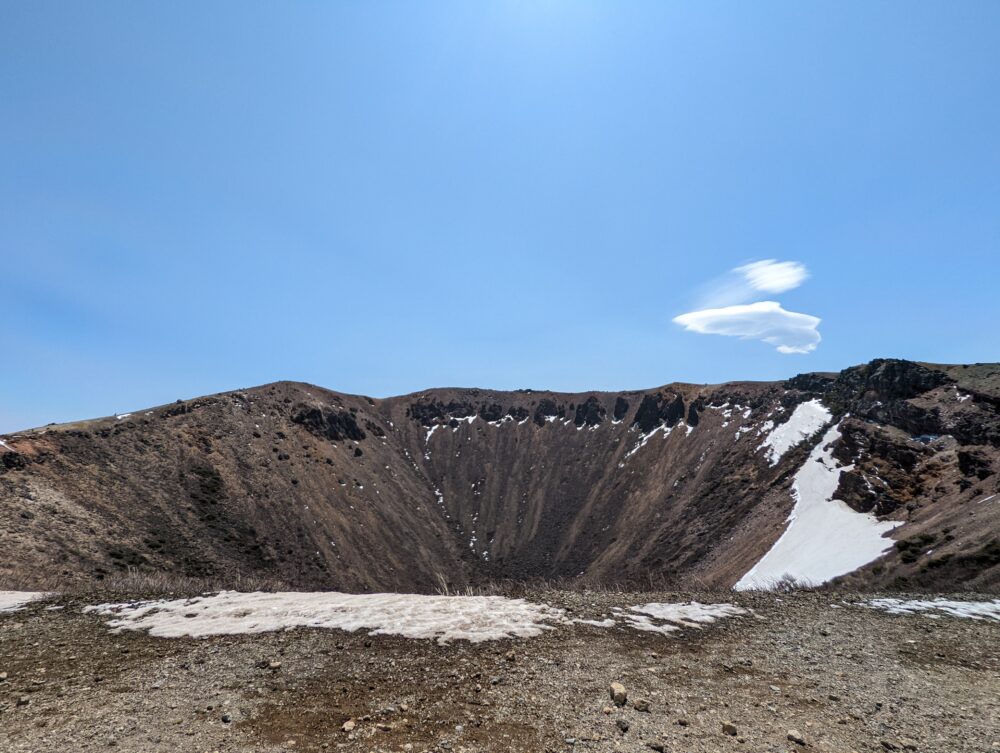

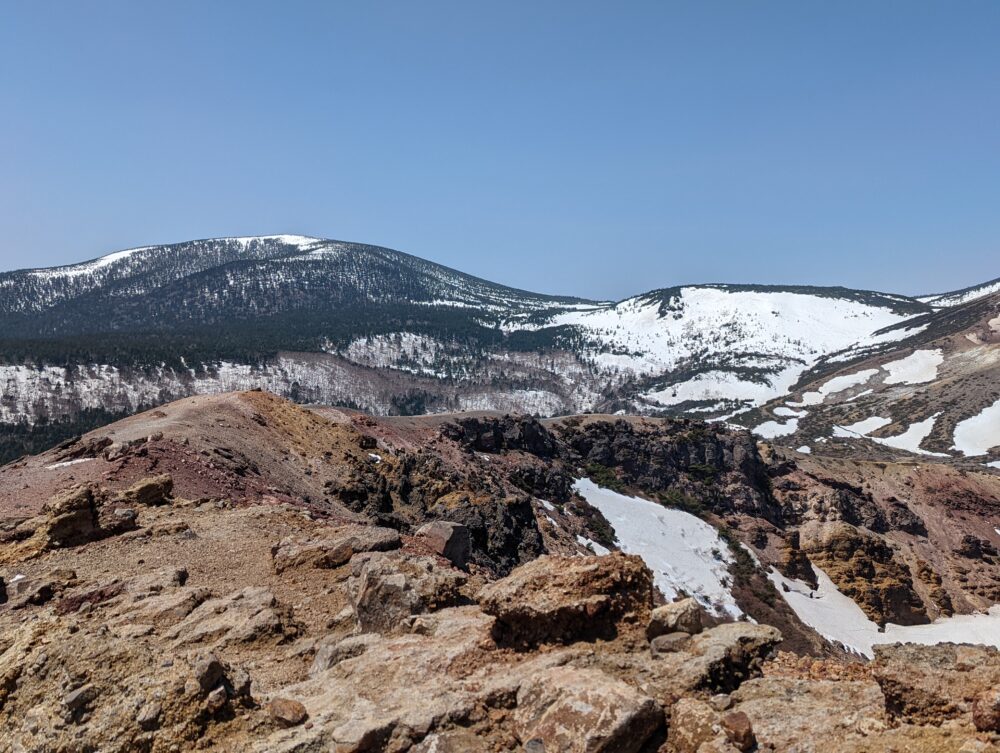
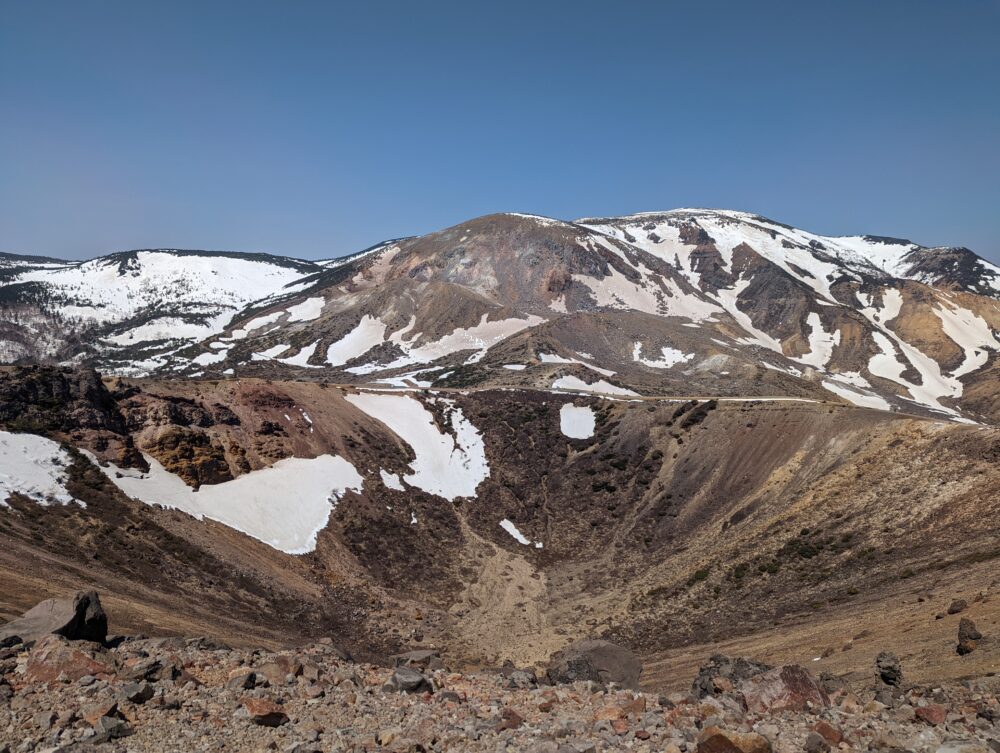
Reference information Official website:.
Jododaira Visitor Centre https://www.bes.or.jp/joudo/
(also has information on the Bandai-Azuma Skyline)
Admission: free
Opening hours: according to the opening hours of the parking lot and the Skyline (closed in winter).
Recommended season: late May for fresh greenery – mid-October for autumn colours.
~How to get there from Tokyo~
■How to get there by car
(1) Exit at the Fukushima Nishi IC of the Tohoku Expressway and proceed along Route 115 in the direction of Inawashiro and Tsuchiyu.
From Route 115, take the Bandai-Azuma Skyline towards the Jododaira parking area. Azuma Kofuji is just a short distance from the Jodododaira parking lot.
Time required:.
From the Tokyo IC to the Fukushima Nishi IC: approx. 2 h 30 min – 3 h. From the Fukushima Nishi IC to the Jodododaira parking lot: approx. 1 h – 1 h 30 min.
Fees:.
Tohoku Expressway tolls: approx. 6,000-7,000 yen (varies according to ETC discounts, etc.).
■How to get there by train
(1) From Tokyo Station, take the Tohoku Shinkansen ‘Yamabiko’ or ‘Tsubasa’.
It takes about 1hr 30 mins to 2hrs to arrive at Fukushima Station.
(2) From the East Exit of Fukushima Station, take a bus (seasonal service) bound for Bandai-Azuma Skyline and get off at Jododaira. Azuma-Kofuji is just a short walk from the bus stop.
Travel time:.
Shinkansen approx. 1 hr 30 mins – 2 hrs, bus approx. 1 hr 30 mins – 2 hrs. Total: approx. 3-4 hours.
Fares:.
Shinkansen (Tokyo → Fukushima): unreserved seat approx. 8,500 yen, reserved seat approx. 9,000-10,000 yen. Bus fares depend on the section of the journey, but one way from Fukushima Station to Jododaira costs approx. 1,750 yen.
Tip: Public transport access to Bandai-Azuma Skyline and Jododaira is limited in terms of the length and number of services. Before visiting, be sure to check the latest information on websites such as Fukushima Kotsu. The Skyline is closed, especially in winter.
An inn town where time stands still! Step back in time to the Edo period at the Ouchi Inn.

Ouchi-juku is a valuable village in Shimogo, Minami Aizu-gun, Fukushima Prefecture, which retains strong traces of an Edo period inn town. It was built about 400 years ago and prospered as an important transport route between Aizu-Wakamatsu and Nikko. Today, Main Street, with its rows of thatched-roof houses, still retains the atmosphere of those days and has been selected as one of the country’s important traditional buildings. Souvenir shops and eateries line the eaves, where visitors can sample local specialities such as the famous ‘Negi Soba’ (green onion soba). This is a recommended sightseeing spot not only for history buffs, but also for those who want to experience the original landscape of Japan.
~ Features and attractions ~
Like a set from a period drama!
The neat rows of thatched-roof houses make you feel as if you have stepped back in time to the Edo period. The beautiful scenery is picturesque no matter where you cut it off.
Unique way of eating! Specialty Negi Soba
Negi soba, which is eaten using a stick of spring onion instead of chopsticks, is a speciality of Ouchi-juku. It is not only eaten as a condiment, but the spring onion itself is also eaten as a nibble, making it a unique dining experience.
A stroll through history and culture!
Visitors can take a leisurely stroll through the inn town and imagine how people lived in those days. There is also a historical museum where you can learn more about the history of Ouchi-juku.
Seasonal natural beauty
The town is surrounded by beautiful nature throughout the year: fresh green in spring, cool in summer, autumn leaves in autumn and snowy landscapes in winter. The scenery of snow-covered thatched roofs is particularly magical.
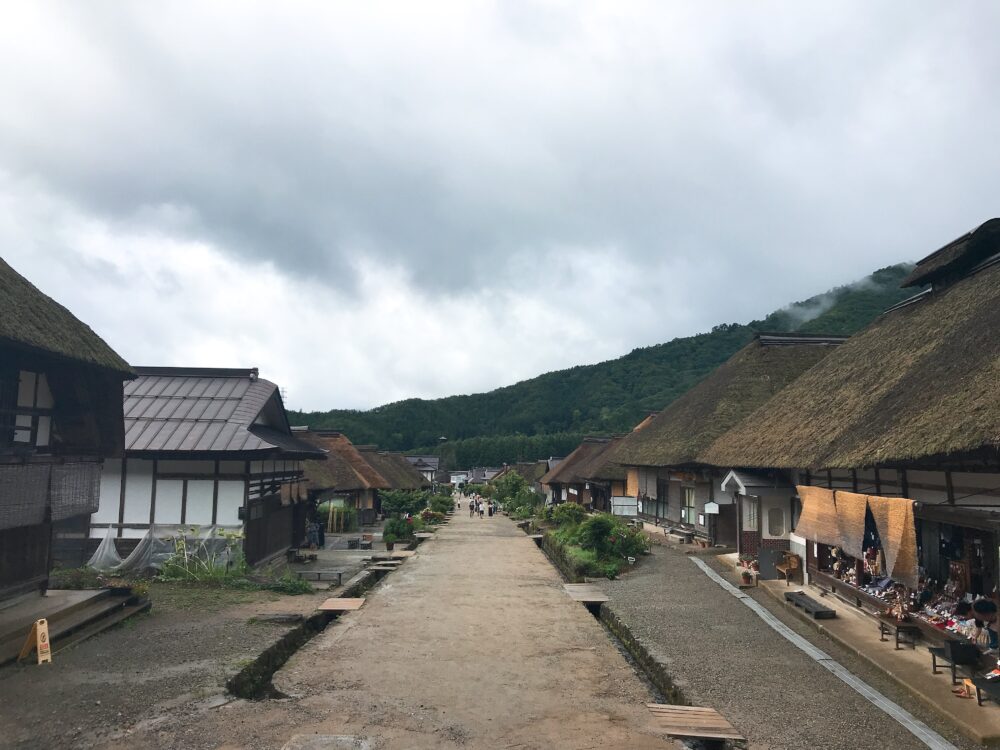
History and background
Ouchi-juku is an inn town established by the Aizu clan in the early Edo period. As an important stopover on the ‘Shimono Kaido’ road linking Aizu-Wakamatsu and Nikko, it was very busy with many travellers and goods passing through. In the Meiji era (1868-1912), with the opening of the railway, the town’s role as an inn town gradually faded away, but the residents continued to protect this precious landscape. Their efforts paid off, and in 1981 the area was selected as one of the country’s important traditional buildings, and today it is a historical tourist destination that attracts many visitors.
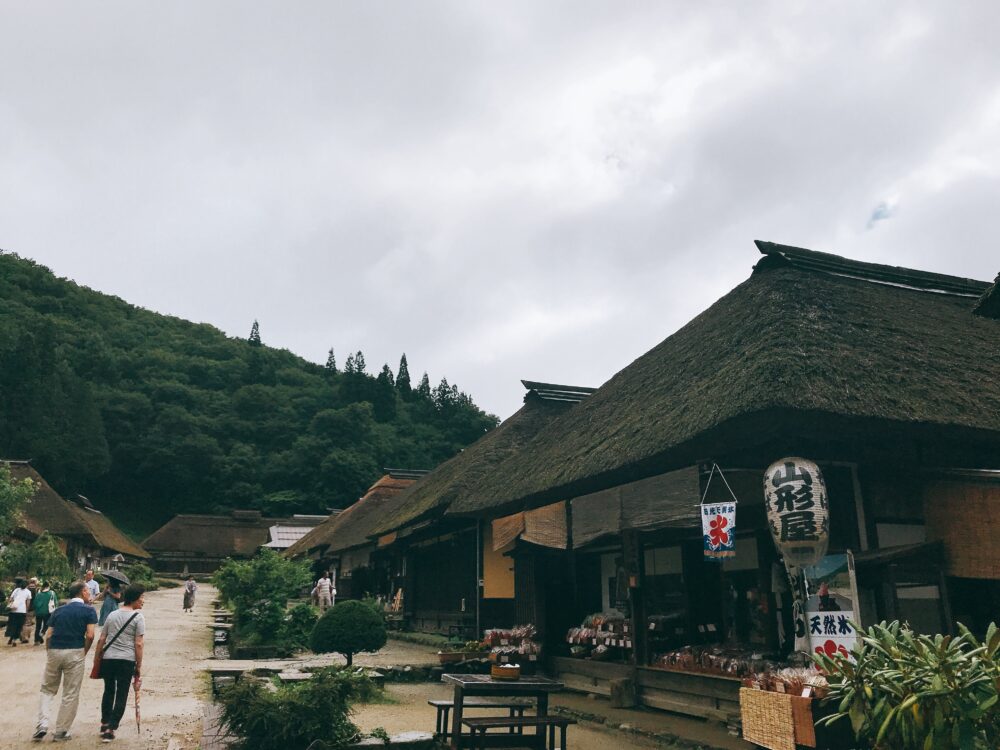
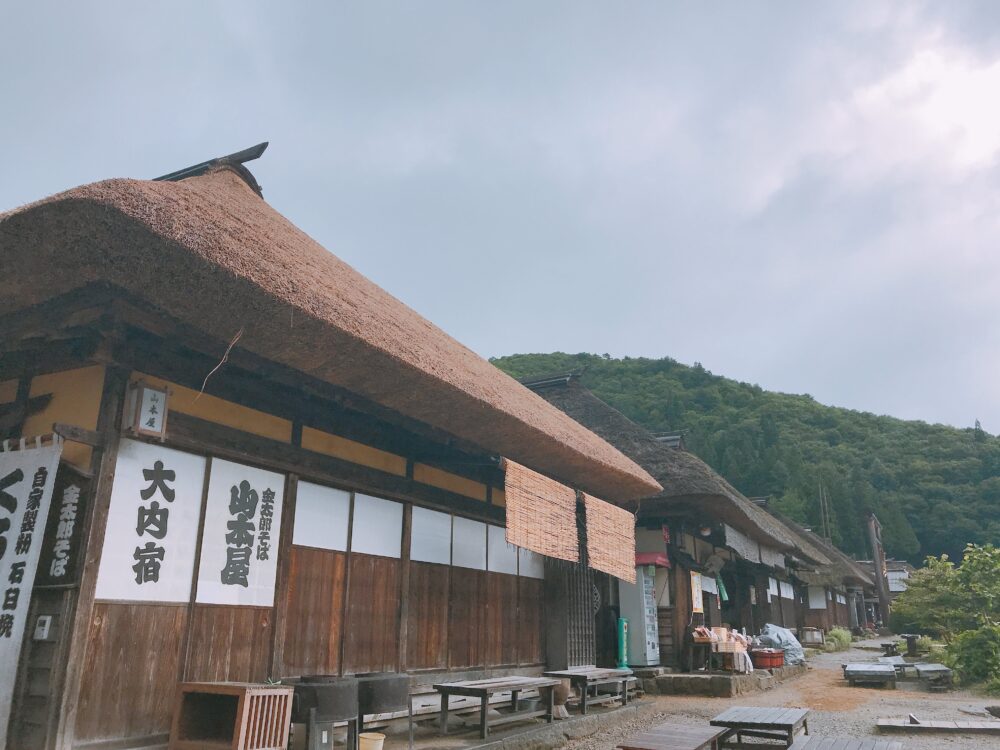
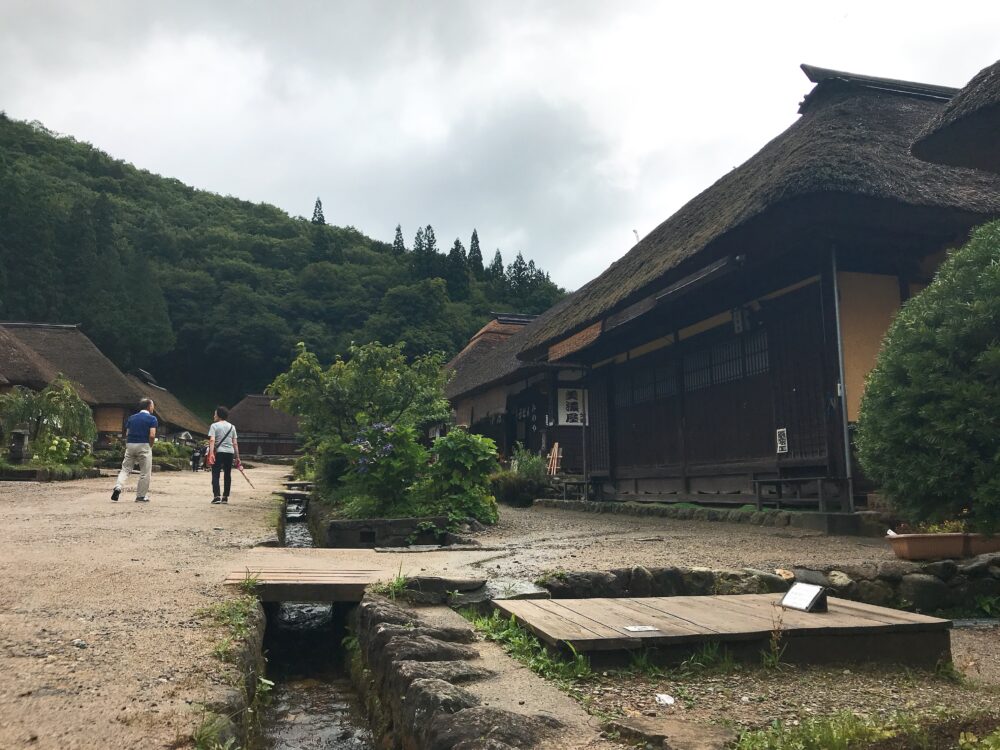
Reference information
Ouchi-juku Tourist Association: https://ouchi-juku.com/
Ouchi-juku Townscape Preservation Society: http://ouchijuku-machi.jp/
Fee: Free to visit the village (some facilities charge a fee).
Opening hours: Vary according to each shop.
Recommended season: spring for fresh greenery (May-June), autumn for coloured leaves (late October-early November).
~How to get there from Tokyo ~
■How to get there by car
Exit at the Shirakawa IC on the Tohoku Expressway and proceed along Route 289 in the direction of Shimogo.
It takes approximately 1 hour to reach Ouchi-juku.
Time required:.
From the Tokyo IC to the Shirakawa IC: approx. 2 – 2 hr 30 min, from the Shirakawa IC to Ouchi-juku: approx. 1 hour. Total: approx. 3 – 3 hr 30 min.
Fees:.
Tohoku Expressway tolls: approx. 3,500 – 4,500 yen (varies according to ETC discounts, etc.).
■By train
(1) Take the Tohoku Shinkansen ‘Yamabiko’ from Tokyo Station.
(2) Arrive at Koriyama Station in approx. 1hr 20 mins to 1hr 40 mins.
(3) At Koriyama Station, change to the JR Ban-Etsu-Nishi Line and take the JR Ban-Etsu-Nishi Line towards Aizu-Wakamatsu, arriving at Aizu-Wakamatsu Station in approximately 1 hour.
(iv) From Aizu-Wakamatsu Station, transfer to the Aizu Railway and arrive at Yunoue Onsen Station in approximately one hour.
(5) From Yunoue Onsen Station to Ouchi-juku is a 10-minute taxi ride or a 20-minute bus ride on the Saruyu-go bus (limited-time operation).
Travel time:.
Shinkansen approx. 1 hr 20 mins – 1 hr 40 mins, JR Banetsu-Nishi Line approx. 1 hr, Aizu Railway approx. 1 hr, bus/taxi approx. 10 mins – 20 mins. Total: approx. 3 h 30 mins – 4 h 40 mins.
Fares:.
Shinkansen (Tokyo → Koriyama) unreserved seat approx. 6,000 yen, reserved seat approx. 6,500-7,000 yen; JR Ban-Etsu-Nishi Line (Koriyama → Aizu Wakamatsu) approx. 990 yen. Aizu Railway (Aizuwakamatsu → Yunoue Onsen): approx. 970 yen. Bus (Saruyu-go) one-way: approx. 680 yen. Taxi fares vary.
Godzilla, Ultraman… The Nasugawa Special Effects Archive Centre, where the souls of special effects heroes dwell!
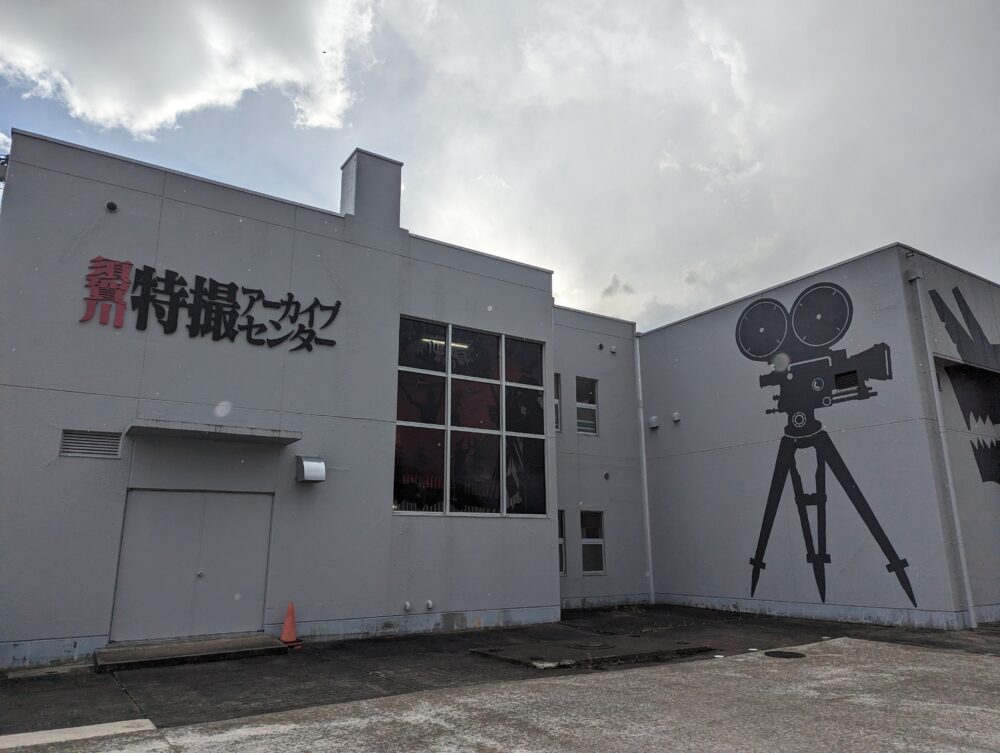
The Nasukawa Special Effects Archive Centre is a facility in Sukagawa City, Fukushima Prefecture, which celebrates the achievements of special effects technical director Eiji Nasukawa and preserves and displays valuable materials related to special effects. It is a true mecca for special effects fans, with many miniatures, props and design drawings used in Japan’s most famous special effects productions, such as Godzilla and Ultraman, on display. Not only can visitors learn about the history and production process of tokusatsu, they can also experience first-hand the passion and creativity of the engineers of the time. This is a recommended spot for everyone fascinated by the world of special effects, from children to adults.
~ Features and attractions ~.
A must for special effects fans!
You can see up close the precious miniatures, props and costumes used in the filming of Godzilla, Ultraman, Kamen Rider and other special effects heroes that everyone knows.
Get to know the behind-the-scenes of special effects technology!
Visitors can learn about the techniques and ingenuity used to create those scenes seen in films and on TV. Design drawings and materials from the time of filming are also on display, giving visitors a glimpse of the production process.
Fun for all generations!
Whether you are an adult who was once a child or a child who is currently obsessed with tokusatsu, there are plenty of exhibits that you can get excited about together. The whole family can immerse themselves in the world of special effects.
A variety of valuable materials!
A number of valuable materials that tell the story of the history of tokusatsu are on display, with a focus on the achievements of Eiji Nasukawa. Even if you are not a tokusatsu fan, this is a valuable place to learn about Japanese visual culture.
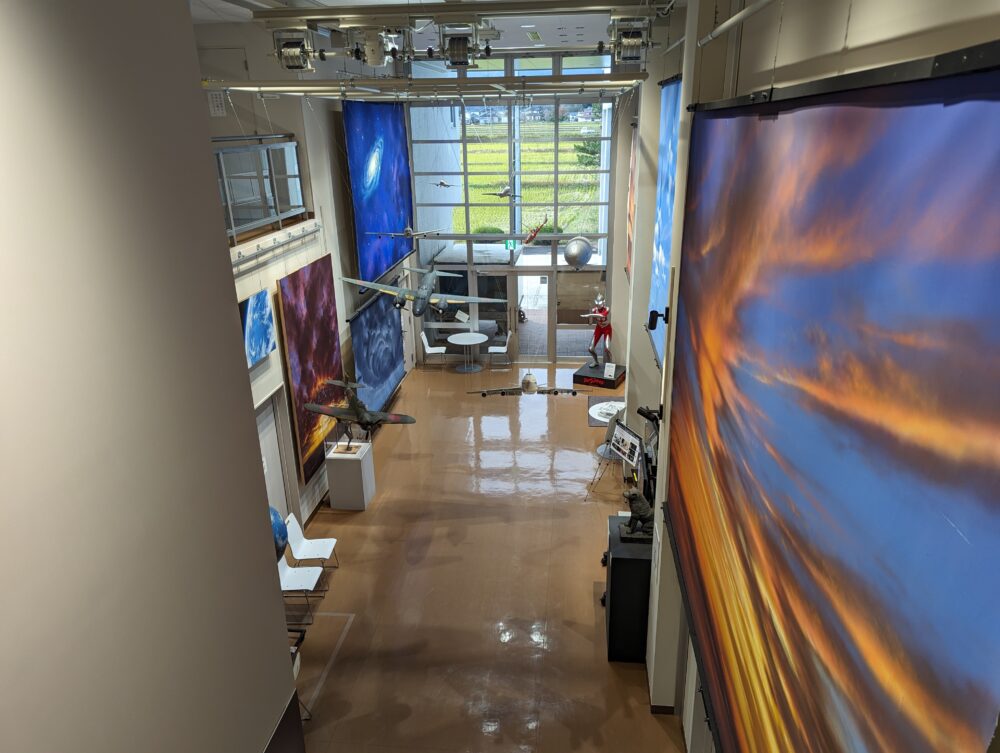
History and background
The Nasukawa Special Effects Archive Centre was established to honour the long-standing achievements of Eiji Nasukawa, a special effects technical director from Sukagawa City, and to pass on to future generations the valuable special effects materials he has collected and preserved. Mr Nasukawa served as special effects technical director for numerous special effects films and TV programmes, including the Godzilla series, and contributed greatly to the development of special effects technology in Japan. This archive centre aims to honour his achievements, promote special effects culture and revitalise the local area.
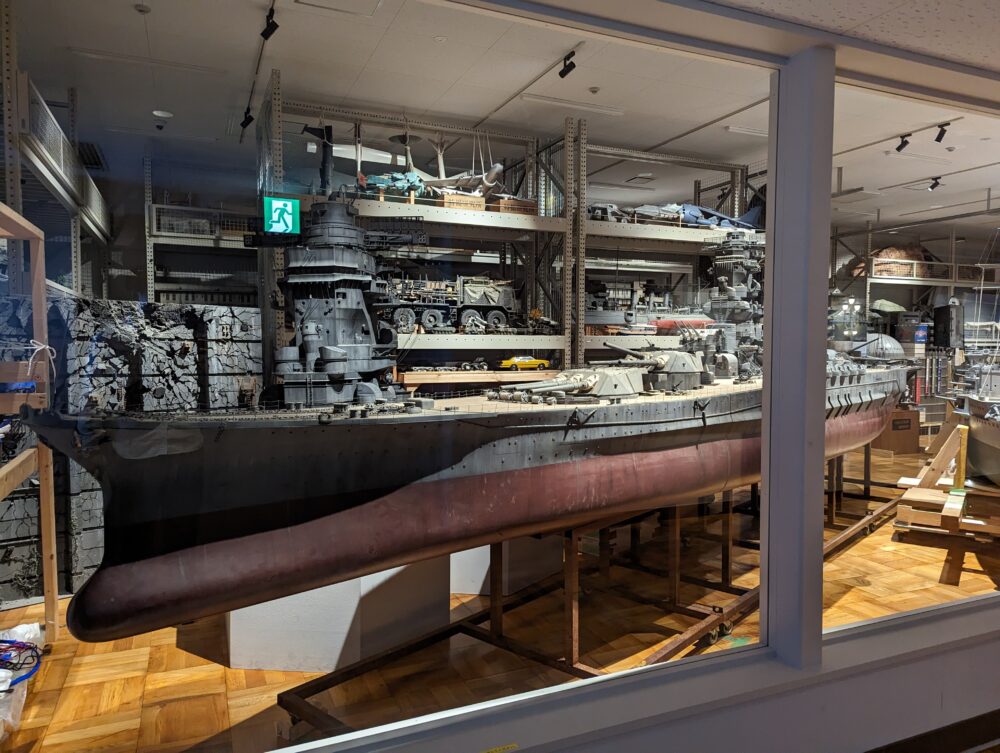
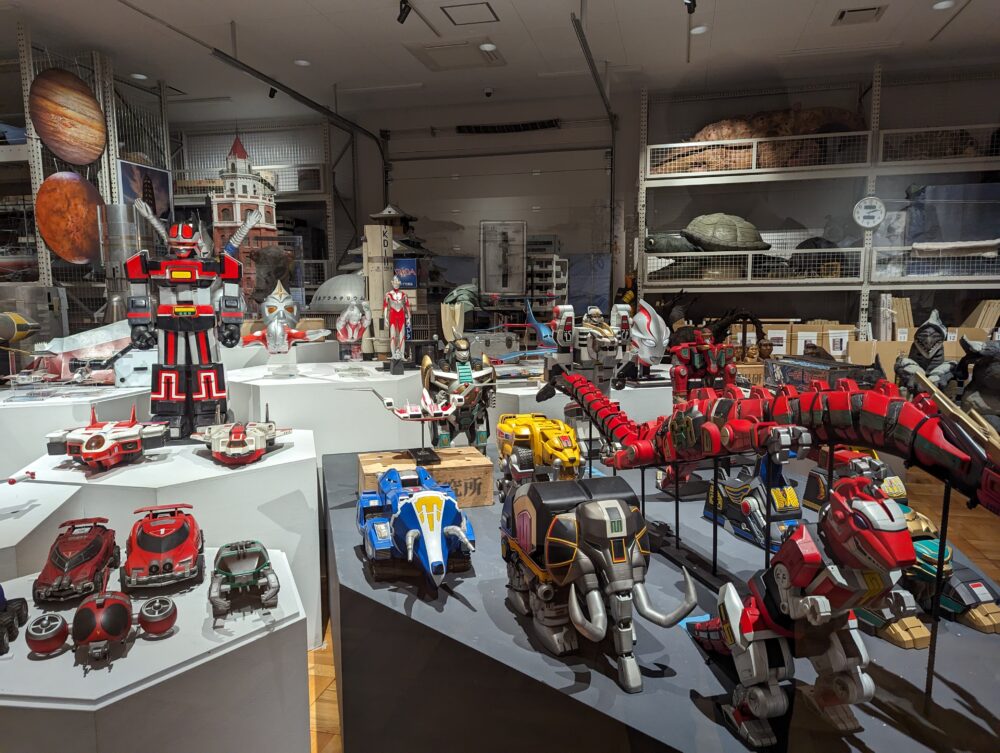

Reference information
Official website: https://www.city.sukagawa.fukushima.jp/kankou_page/tokusatsu/
Fee: Adults 500 yen, elementary and junior high school students 300 yen.
Opening hours: 9am-5pm (last admission 4.30pm).
Seasonal recommendations: all year round (indoor exhibition is less vulnerable to weather conditions).
~How to get there from Tokyo~
■How to get there by car
1) Exit at the Sukagawa IC on the Tohoku Expressway and proceed along Route 4 towards Sukagawa City.
(2) It takes about 10 minutes to reach the Nasugawa Special Effects Archive Centre.
Time required:.
From Tokyo IC to Sukagawa IC: approx. 2 – 2 hr 30 mins.
From the Sukagawa IC to the Archive Centre: approx. 10 mins.
Total: approx. 2 hr 10 mins – 2 hr 40 mins.
Fees:.
Tohoku Expressway tolls: approx. 4,000 – 5,000 yen (varies according to ETC discounts, etc.).
■By train
(1) Take the Tohoku Shinkansen ‘Yamabiko’ from Tokyo Station.
(2) Arrive at Koriyama Station in approx. 1hr 20 mins to 1hr 40 mins.
(3) At Koriyama Station, change to the JR Tohoku Main Line (down train) and arrive at Sukagawa Station in approximately 20 minutes.
(4) From Sukagawa Station to the Archive Centre is a 20-minute walk or a 5-minute taxi ride.
Travel time: 1 hour 20 minutes by Shinkansen.
Shinkansen approx. 1 hr 20 mins – 1 hr 40 mins, JR Tohoku Main Line approx. 20 mins,
Walk/taxi approx. 5-20 mins. Total: approx. 1hr 45 mins – 2hr 40 mins.
Fares:.
Shinkansen (Tokyo → Koriyama) unreserved seat approx. 6,000 yen, reserved seat approx. 6,500-7,000 yen.
JR Tohoku Main Line (Koriyama → Sukagawa): approx. 330 yen.
A famous mountain with a spectacular moon-like view! Mount Adatara, a mountain in Fukushima recommended for beginners in mountaineering.
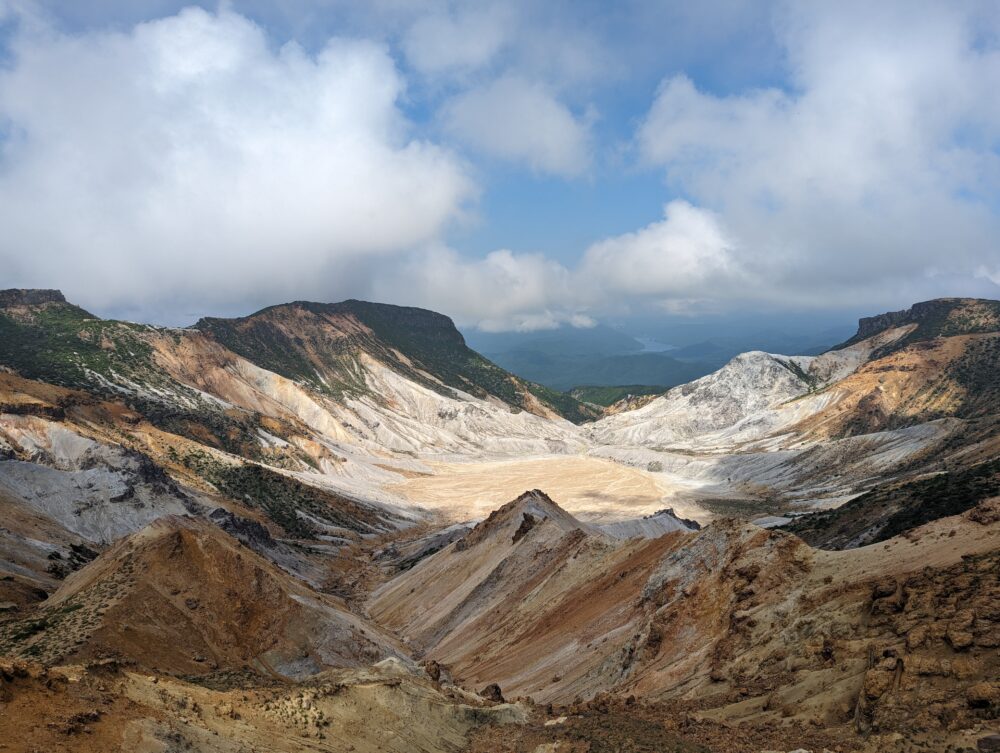
Mount Adatara is a 1728 m-high volcano in Fukushima that is one of the 100 most famous mountains in Japan and one of the 100 most famous mountains for flowers. The ropeway takes about one and a half hours to reach the summit, making trekking an easy and enjoyable experience for beginners and intermediate climbers alike. It is also a famous place for its autumn foliage, which attracts many visitors from late September to October. From the summit of Mount Adatara, the Azuma mountain range, Mount Bandai, the Nasu mountain range and Lake Inawashiro can all be seen.
Points of interest.
From the summit of Mount Adatara, visitors can enjoy spectacular views of Mount Bandai, the Zao mountain range, the Iide mountain range and Lake Inawashiro!
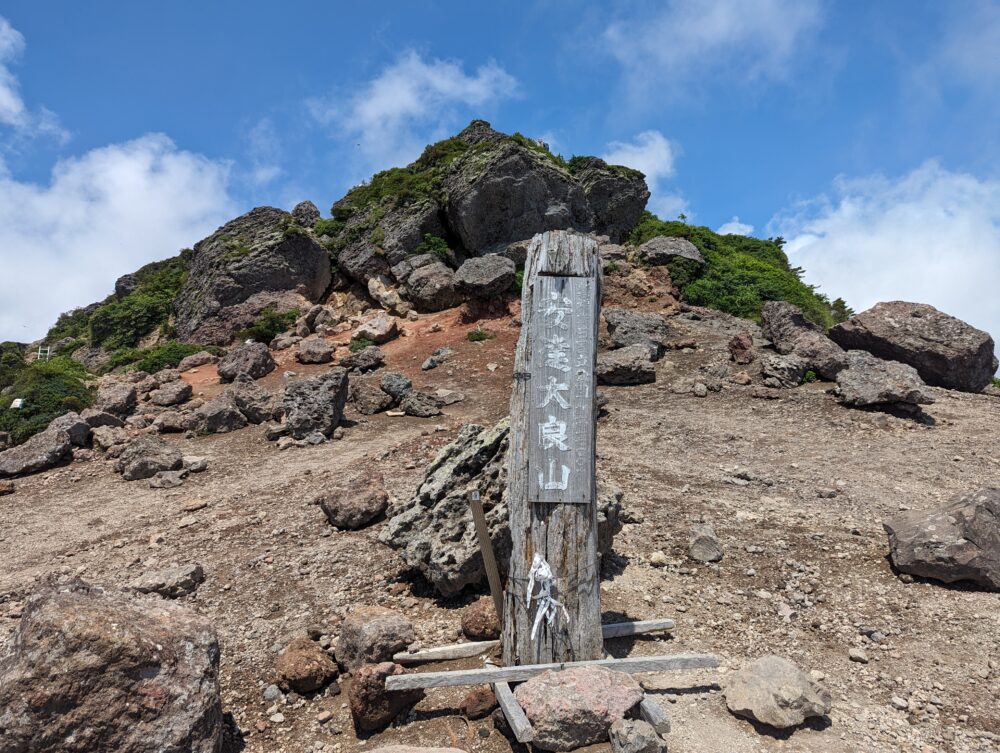
A huge crater created by an eruption in 1899. The landscape is truly otherworldly, with a world that looks like the surface of the moon!
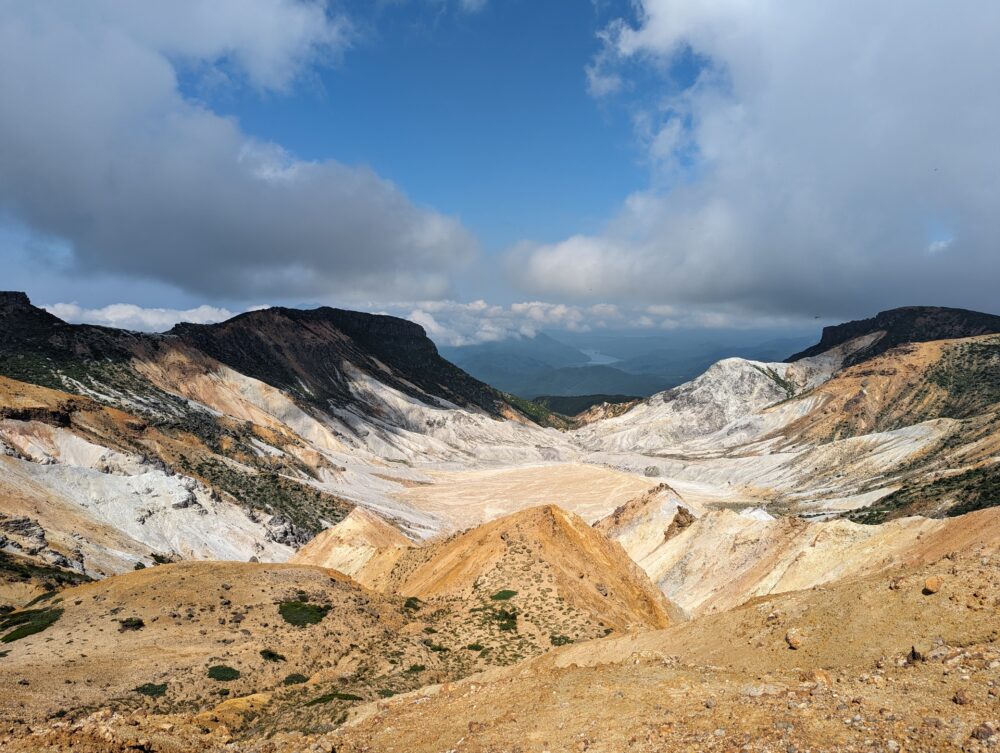
The Mt Adatara ropeway will take you to the summit in 1.5 hours! You can easily enjoy climbing the mountain!
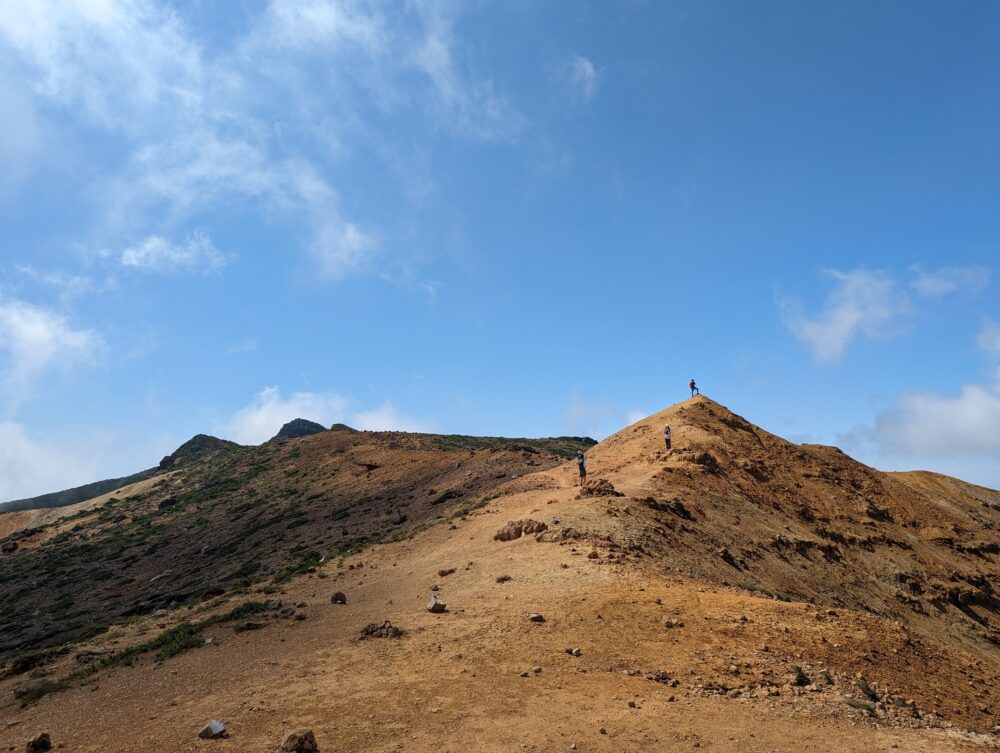
summary
Fukushima Prefecture is a fascinating place with a rich mix of nature, culture and history: activities on crystal clear lakes, aquariums with a wide variety of marine life, mountain roads with breathtaking views and historic inn towns that retain traces of the Edo period. Each spot offers a different experience and can be enjoyed according to the interests and objectives of the visitor. It is an area with a profound charm, where you are likely to discover something new no matter how many times you visit.

